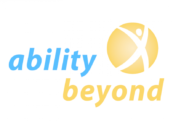Hiring people with disabilities is not about charity—it’s about smart business.
By: Kris Foss
Nearly 40 percent of employers are having challenges hiring qualified employees, while at the same time one in five people in the United States have some type of disability and are facing challenges in getting hired. Some disabilities are visible, such as physical disabilities, and some are hidden; including mental health conditions, medical conditions, learning and cognitive disabilities. We also have a large population “aging into disability” for the first time and veterans with disabilities returning to the civilian workforce.
I am often asked about the types of jobs a person with a disability can do. My answer is always the same: “What do you have?” The reality is that the talent pool of people with disabilities remains underutilized, even though it includes jobseekers with a wide and diverse range of education, degrees, professional certifications, work experience and skills.
These workers bring alternative perspectives to getting a job done, to solving a problem, and to reaching a goal. It’s these unique perspectives and life experiences that can contribute innovative ideas, processes and market reach.
A Wide and Diverse Talent Pool
Hiring people with disabilities is not about charity; it’s about smart business. People with disabilities in the United States alone represent an annual spending power of $645 billion, and their friends and families — those who would make spending decisions based on how inclusive and accessible a company may be—represent another $4 trillion in annual spending, according to the Return on Disability Group. Here at Ability Beyond, we’ve worked with clients across a range of industries, including familiar brands such as PepsiCo, Synchrony Financial, American Express, Aon, Staples and Aramark. These companies and others have hired people with disabilities to meet their talent needs across the board and are seeing real business results including key HR metrics—an average 14-percent higher retention rate in the same roles for disabled vs. non-disabled and a 33-percent decrease in interview-to-hire ratios. Also, they have voluntary “self-disclosure” rates among jobseekers with disabilities and veterans that are 53 points and 28 points higher, respectively—important compliance results for government contractors and reflecting a positive and inclusive corporate culture.
All of us have many roles in life—both in our work and personal lives—and bring our varied backgrounds, upbringing, culture, and prior experiences to the table. People with disabilities are no different and cut across all dimensions of diversity. For example, across our client base, employees with disabilities who’ve been hired range across several areas of EEO reporting: 35 percent women, 21 percent veterans, 19 percent Hispanic, 36 percent white, 42 percent black.
Synchrony Financial’s Story
Let me tell you about one client, Synchrony Financial, which operates a large operations center employing over 1,900 employees in Ohio housing a variety of business lines and roles—including both B2B and B2C customer card services. When it was considering a location to pilot a hiring initiative spearheaded by its Persons with Disability and VETS employee networks together with human resources, Synchrony considered factors such as a variety of roles with open opportunities, business-line growth and projected talent need, leadership commitment and regional talent resources. Due to growth and business need, the decision was made to begin by focusing on customer service and inbound fraud representative roles.
To achieve business results, we started with our discovery process to understand the business needs and inform our strategic playbook. This includes job qualifications, work environment (including a “day in the life” analysis), business goals and objectives, and the application process. Although systems, policies and procedures aren’t the sexiest topics, they’re crucial for identifying often easy-to-fix barriers to jobseekers getting interviewed and hired.
Based on what we learned through discovery, hiring managers and HR were prepared via training and best-practice discussions, and we then began outreach together to build talent partnerships on their behalf. Talent partners included veteran’s groups, college and universities, state workforce agencies and community organizations. The Synchrony talent brand was an important piece of the outreach as we worked to reach jobseekers directly through word of mouth, social media and other organic communication within the community.
Next, we cultivated talent partnerships throughout the community to build a recruiting pipeline. Jobseeker referrals came from a mix of partnerships including veteran’s groups, non-profit organizations and local colleges. We also attracted jobseekers with disabilities via targeted advertising and job openings posted on the Disability Solutions national Career Center job board.
The results? Synchrony Financial exceeded the initial pilot goal of hiring 45 employees with disabilities, with 60 employees with disabilities hired over 12 months. As of March this year, a total of 73 people with disabilities have been hired through the program. The retention rate for these hires has been above-average during the first year, and the program has since been expanded to a second operations center in Arizona, where 20 people with disabilities have been hired so far. Similar initiatives are expanding across the organization and throughout a variety of business lines. The company’s best practices have been shared nationally via the the CEO Action initiative—a commitment to diversity by CEOs.
Lessons Learned
Pilots offer a unique opportunity to learn while testing and validating. A crucial key to success is finding the right talent partners. There are many organizations out there and it helps to have assistance in finding partners who will work with you to understand your business needs and provide you with solid and consistent talent referrals. Host events, talk to the community, or work with experts who know the talent field.
When creating a disability hiring strategy, make sure that it aligns with your organization’s business priorities and systems. Don’t be afraid to make changes, but don’t “reinvent the wheel,” either. Don’t worry about getting it perfect before starting. Just follow your plan, know that mistakes can happen, and learn from them.
As the competition for top talent increases, leading companies are searching for new and valuable talent pools. The companies that are actively hiring people with disabilities are recognizing measurable and meaningful business outcomes. So, what type of jobs can a person with a disability do? What have you got?

Kris Foss is the managing director of Disability Solutions, the consulting division of nonprofit Ability Beyond. This article appeared Recruiting Trends & Talent Tech



